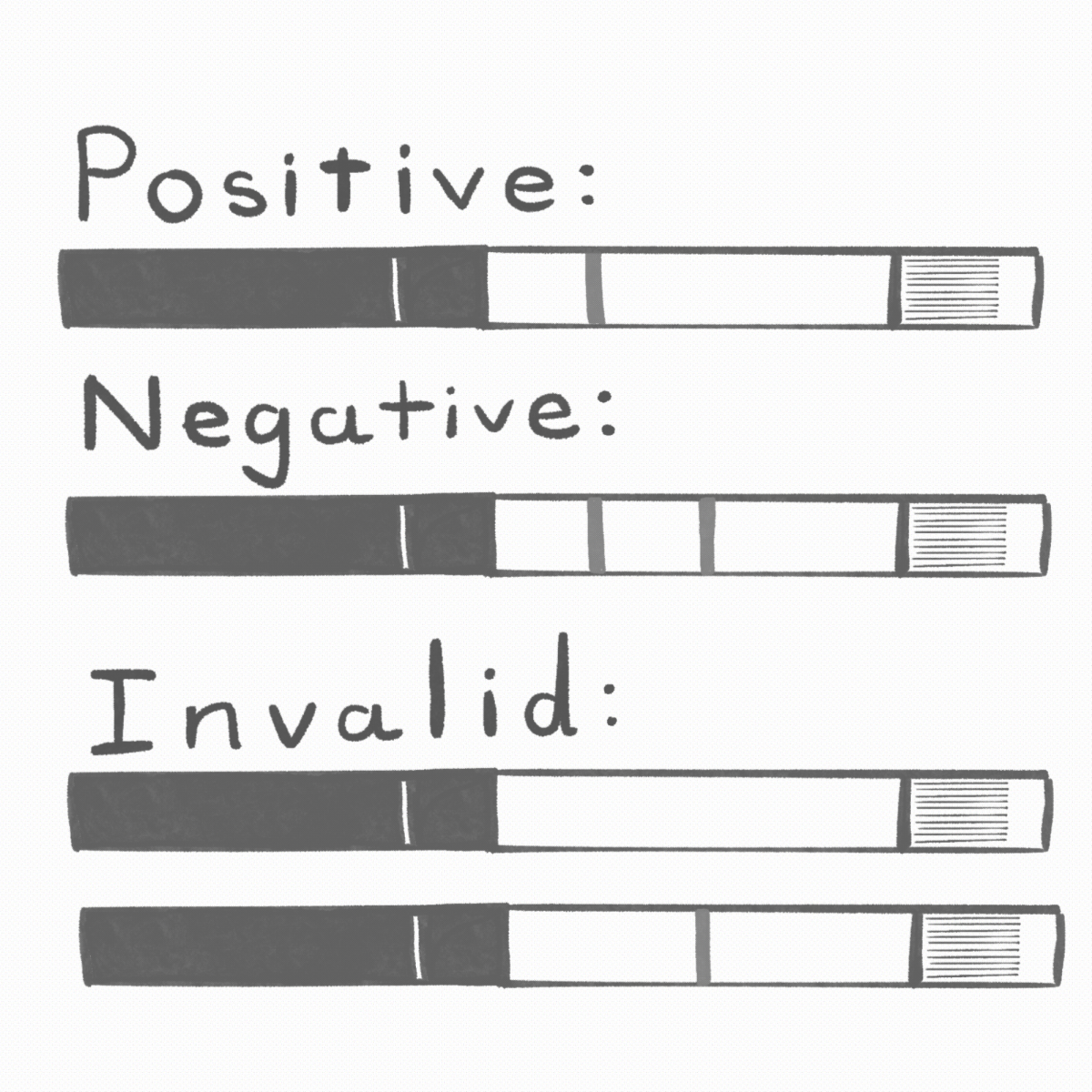How to test your drugs for fentanyl:
1. Prepare your sample:
Place a small amount of the drug you want to test into a container. You’ll need a minimum of 10 milligrams (approximately enough to cover a penny), but testing a larger sample is recommended due to the “Chocolate-Chip Cookie Effect.”
If the drug is in pill or tablet form, crush it into a fine powder.
2. Add water:
For meth, MDMA or ecstasy, add one tablespoon of water per 10 milligrams of the drug.
For all other drugs, use half a tablespoon of water.
3. Mix:
Stir thoroughly to dissolve the drug in the water.
4. Test:
Place the wavy end of the test strip into the container for 15 seconds to let it absorb the liquid.
5. Wait:
Remove the strip from the liquid and let it sit for 2 minutes.
6. Read the Results:
One red line: The test sample is positive for fentanyl.
Two red lines: The test sample is negative for fentanyl.
We need to talk about the “Chocolate Chip Cookie Effect.” Imagine you have a chocolate chip cookie: While it’s tasty and fairly uniform in appearance, the chocolate chips are unevenly distributed through the cookie — meaning some bites might have more chocolate than others. Drugs can be similar to a chocolate chip cookie. Adulterants like fentanyl may not be evenly mixed within the substance, meaning some parts of your drug may contain fentanyl while other parts might contain none. This is why it is essential to test more than you need.
Before you test your drugs, you should know that fentanyl test strips are actually illegal in Texas. Texas is one of the few states where possessing test strips is against the law. On the flip side, there’s broad bipartisan support for legalizing fentanyl test strips. Even Governor Greg Abbott, someone I seldom agree with, has voiced support for their decriminalization. With so much agreement across the party lines, why aren’t they legal?
On Nov. 14, 2022, House Bill 362 was introduced, a bill that would decriminalize fentanyl test strips in Texas. There have been a total of 12 bills introduced attempting to decriminalize them in an attempt to prevent rising opioid deaths. However, House Bill 362 made it the farthest and was sent to the Texas Senate’s Criminal Justice Committee which it never left and eventually “died” in. If you’re curious you can contact the members of the State Criminal Justice Committee, and please feel free to contact them — it’s your right as a Texan.
On average, five Texans die daily from fentanyl overdoses. These are all deaths that could be prevented if more people had access to fentanyl test strips. Research shows that 43% of people who use fentanyl test strips changed their behavior to reduce risks after testing. The test strips are effective in encouraging safer drug use.
It is also important to note that fentanyl test strips aren’t just for people with substance use disorders. For instance, college students might unknowingly purchase fake Adderall to help with studying, only to consume pills laced with fentanyl or other adulterants. With the rise of fentanyl and the incredibly small amount required to cause an overdose, just two milligrams or about the size of five grains of salt, accidental overdose due to adulterant contamination can easily occur. Adulterant contamination can occur for several reasons, including if the same equipment was used to press the drugs or it was cut on the same table, even if the person manufacturing the drugs does not intend to include fentanyl. Tragically, this exact scenario happened when two Ohio State students died from overdosing on counterfeit Adderall. Situations like this highlight the importance of test strips for all demographics, not just those who use drugs recreationally.
One argument against legalizing fentanyl test strips is that drug dealers have used them to market “clean” drugs, potentially encouraging drug use. While this is a concern, it doesn’t outweigh the benefits. Besides, dealer’s test strips may be inaccurate, and the drugs could be laced anyway. People should be able to test the drugs themselves, rather than relying on dealers to ensure their products are unadulterated. Legalizing test strips gives individuals the tools to make informed decisions and avoid life-threatening risks.
Fentanyl test strips are an important tool to prevent overdose and promote safe drug use. However, their illegal status in Texas prevents their life-saving potential. Despite bipartisan support and clear evidence of their effectiveness, they are yet to be decriminalized. The risks of accidental overdose, from things like counterfeit medication, for example, shows the urgent need for this testing to become more accessible. While there are concerns about misuse, the benefits far outweigh the drawbacks. How much do you value someone else’s life?






